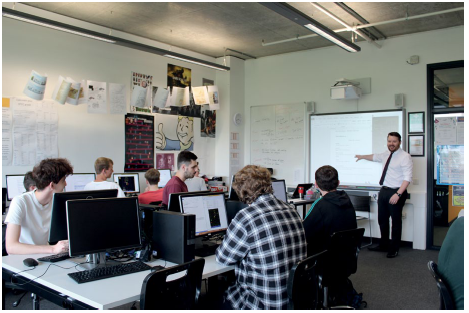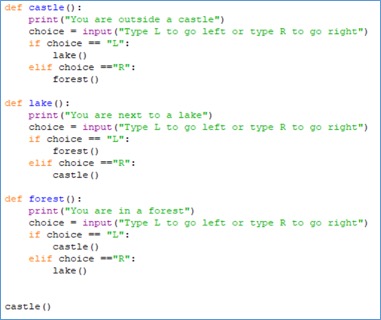
The classroom opposite mine had a sticker in the window that the teacher had put there after a holiday to the USA. It was clearly visible from my room and was perhaps the most American thing I could imagine. It had a backdrop of a fluttering stars and stripes flag and a faded out bald eagle on the left with the statement “Failure is not an option” emblazoned across the centre. This quote from the movie Apollo 13 was often reused during exam season as a motivational tool. I’m not sure how successful it was but I’m sure many students found strength in the words and attitudes expressed by those pioneers of space travel. However, for my day-to-day lessons, I soon discovered that fear of failure had more of an impact on my students’ attainment than pretty much any other factor you’d care to measure.
As a teacher of ICT, Computer Science and Game Design across Key Stage 3, 4 and 5, I have seen several trends emerge in recent years. Firstly, despite numerous attempts, the percentage of girls taking my subject has gradually fallen to embarrassingly low numbers. Secondly, my subject is increasingly seen as being technical rather than creative. I’m not senior enough to know why exactly these changes have occurred, but I do know that we need to try to reverse them. Computer Science and its ‘cooler’ cousin, Games Design, in my mind are much more ‘arty’ than some believe. Learning the language and syntax of code is very similar to the steps students take in Spanish and French or even in Music. A good coder or game designer will have much more in common with an artist approaching a blank canvas with just the beginnings of an idea than a mathematician searching for the correct outcome. I sketched out three rules to follow which have changed the way I teach my subject.1
Rule 1: Quick wins
A quick win is something a student should be able to learn and complete to a set level within the space of one lesson. It should also be something meaningful. A quick win gives a student a moment of satisfaction that they’ve achieved the impossible. Let’s take the example of learning Python coding for the first time. For many students this can make or break their experience of Computer Science. Traditionally we should start with ‘Hello World’ and move through input/output tutorials to IF statements and beyond. After about 5 to 6 relatively simple tutorials the students should be able to make some creative choices, but by that stage I often find that students have become frustrated at errors that have occurred or perhaps by the nature of the task. “When are we going to make a game?” they cry out.
Instead I start by asking the students to copy out some code from the board. No copy and paste – part of the challenge is in the typing.

Run the code and you’ll get the world’s shortest text adventure game. Instant quick win. Then we have to figure out how to make more locations, and for the most part the students easily figure out that the ‘blocks’ of code under the def must be the locations. Very quickly I’ll have students who will customise the names and directions, sometimes even adding multiple additional paths. The discovery of how the code works is now in the hands of the students and, in my opinion, this ownership empowers them to experiment for themselves. Coding errors can seem like a failure, but here it means they’ve tried to do something cool and missed. I’ll ask the students to add a new location and perhaps only 10 per cent get it right the first time. As this task is very student-centred, I find that those who get it working first are quick to spread the news of their success and to inform those around them of the solution.
With every new development to their game they learn how to fail in new ways, but that it’s ok because someone else in the room has their back. By the end of our 45-minute session every student has a simple text adventure game and their knowledge of Python syntax has increased from ‘speaking’ the language in context. When we teach French, we start by getting them to say “hello” and introduce themselves (a quick win) – we don’t start with a lecture involving the rules for using apostrophes!